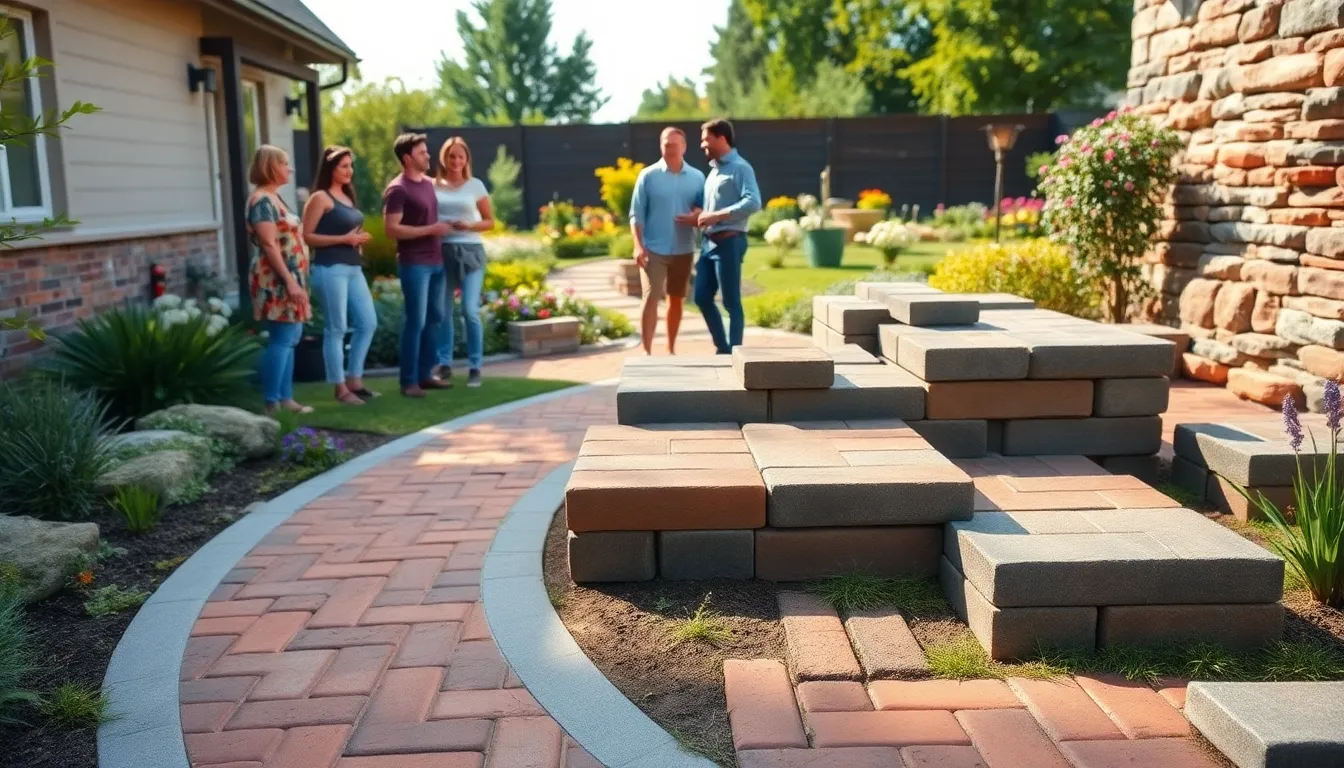Are you tired of staring at a drab yard that looks like an afterthought? Want to transform it into a stunning oasis that will make your neighbors green with envy? Look no further than landscaping bricks. These versatile beauties can elevate your outdoor space with flair and functionality. Buckle up as we jump into the world of bricks for landscaping and discover why they might just be the gem you’ve been missing.
Bricks for Landscaping

Landscaping bricks are more than just building materials: they are the backbone of outdoor design. Typically made from clay, concrete, or stone, these bricks come in a myriad of sizes, colors, and textures, allowing homeowners to express their unique style. The true beauty of landscaping bricks lies in their ability to be integrated into various designs, from elegant garden paths to sturdy walls, which can withstand the elements.
Understanding the composition of these bricks is key. Clay bricks are known for their rich colors and natural textures, while concrete bricks offer durability and a flat surface, which is perfect for paving. As homeowners explore options, they often find themselves captivated by the idea of creating functional outdoor spaces that are both aesthetically pleasing and practical.
Benefits of Using Bricks in Landscaping
The advantages of using bricks in landscaping are hard to ignore. For starters, they are incredibly durable. Unlike wood, which can rot or warp, bricks are hardy and can endure harsh weather conditions, showing minimal wear over time. This makes them an excellent investment for anyone looking to enhance their outdoor space.
Next, let’s talk about versatility. Bricks can be used for numerous applications, including pathways, borders, and even retaining walls. They can complement any design style, whether traditional or modern. Also, their heat retention properties can create a cozy atmosphere for outdoor gatherings, especially in cooler months.
Finally, let’s not forget about maintenance. Bricks require minimal upkeep compared to other materials, only needing a good wash now and then to keep them looking fresh. With these benefits in mind, it’s clear why landscaping bricks are becoming a go-to choice for homeowners across the country.
Types of Landscaping Bricks
When it comes to landscaping, not all bricks are created equal. Here’s a closer look at the types available to help homeowners make an informed choice:
- Clay Bricks: These are the classic choice, known for their reddish hues and rustic charm. They are ideal for garden paths or fire pits, bringing a traditional feel to outdoor spaces.
- Concrete Bricks: Offering versatility and durability, concrete bricks come in several textures and colors. They are perfect for patios and retaining walls, adding a modern touch to landscapes.
- Natural Stone Bricks: For a luxurious feel, natural stone bricks are unmatched. Each piece is unique, giving landscapes a distinct and elegant look, albeit at a higher price point.
- Interlocking Bricks: These have grooves and lugs that fit together, making installation a breeze. They are commonly used for driveways and high-traffic areas, providing strength and stability.
By knowing the different types, homeowners can match their choice to their specific landscaping needs.
Choosing the Right Bricks for Your Project
Choosing the right bricks for landscaping can feel overwhelming with so many options available. Start by considering the project at hand. If the goal is to create a pathway, opt for bricks that provide a non-slip surface. Clay or concrete bricks could be ideal in this case.
Next, think about color. Selecting hues that complement the home’s exterior can create a seamless look. Lighter colors reflect sunlight, while darker tones absorb heat, which could be a factor for specific climates.
Don’t forget about texture. Bricks come in smooth and rough finishes, impacting both aesthetics and safety. Rough textures offer better grip for walkways, while smooth ones might be more suitable for decorative purposes.
Finally, consider the environment. Are the bricks meant for a drainage area? Some types are better suited for preventing pooling water. Thoughtfully evaluating these factors will lead to a successful landscaping project.
Installation Tips for Landscaping Bricks
Now that the perfect bricks have been chosen, it’s time to install them. Here are some tips to ensure a successful project:
- Plan Your Layout: Draw a rough sketch of the desired design. This will serve as a guide during installation and prevent confusion down the line.
- Prepare the Ground: Good preparation is essential. Clear the area of any debris, weeds, or old materials. Level the ground and ensure proper drainage to avoid future issues.
- Use a Base Layer: Lay a base of sand or gravel to create a stable foundation. This helps with drainage and prevents shifting over time.
- Employ a Consistent Pattern: Whether going for a classic or modern design, maintaining a consistent pattern throughout the installation process elevates the visual appeal.
- Finish with Jointing Sand: After laying the bricks, use jointing sand to fill the gaps. This stabilizes the bricks and prevents weed growth.
Following these tips will ensure a long-lasting and stunning landscaping feature.
Maintenance of Landscaping Bricks
Maintaining landscaping bricks is crucial to preserving their beauty and durability. Regular sweeping or blowing off leaves and debris keeps the surfaces clean and allows for proper drainage.
For stubborn stains, a simple mix of water and dish soap usually does the trick. Just scrub, rinse, and voilà, as good as new. Occasionally checking for any cracks or loose bricks can prevent bigger problems.
In areas prone to weeds, applying a weed killer or using natural alternatives can keep them at bay. Finally, sealing the bricks every few years can protect them from moisture and fading, extending their lifespan. With a little love and care, landscaping bricks can last a lifetime.

